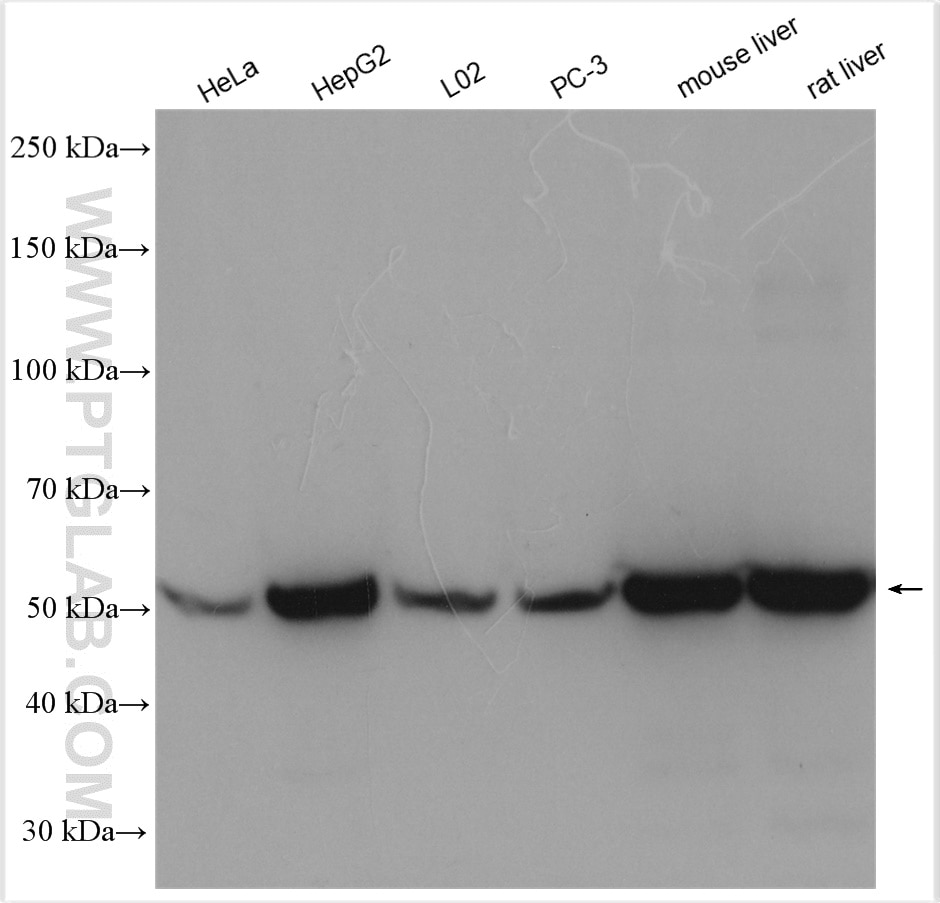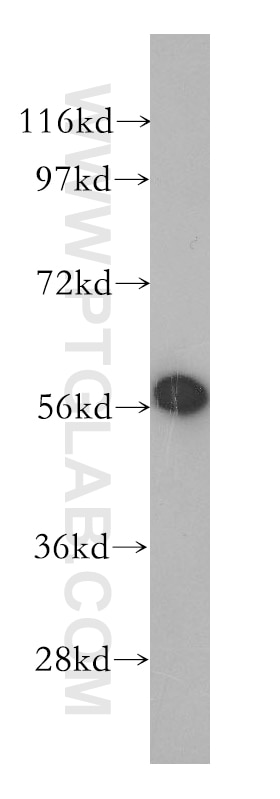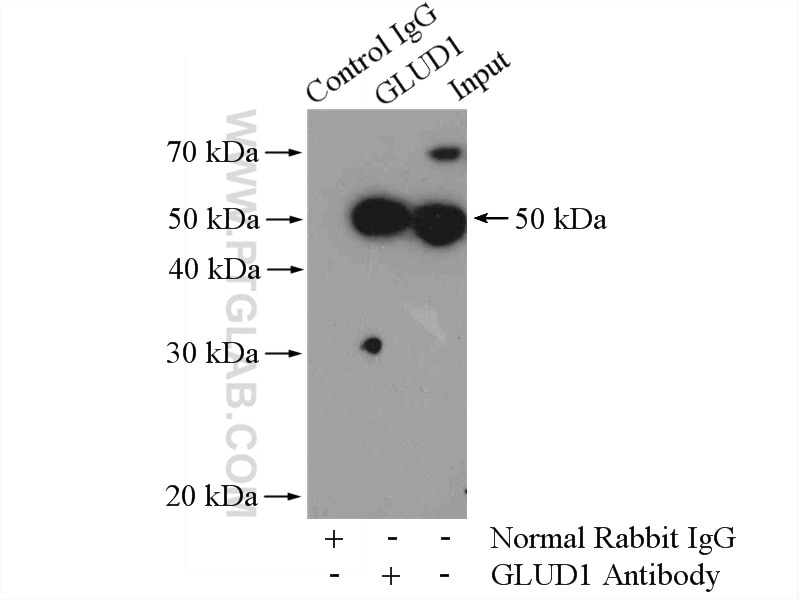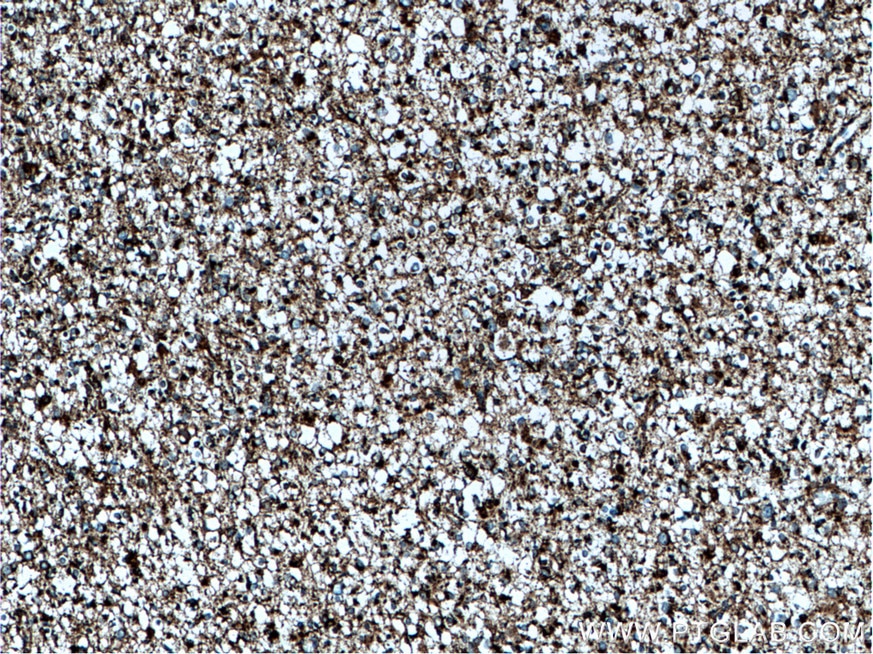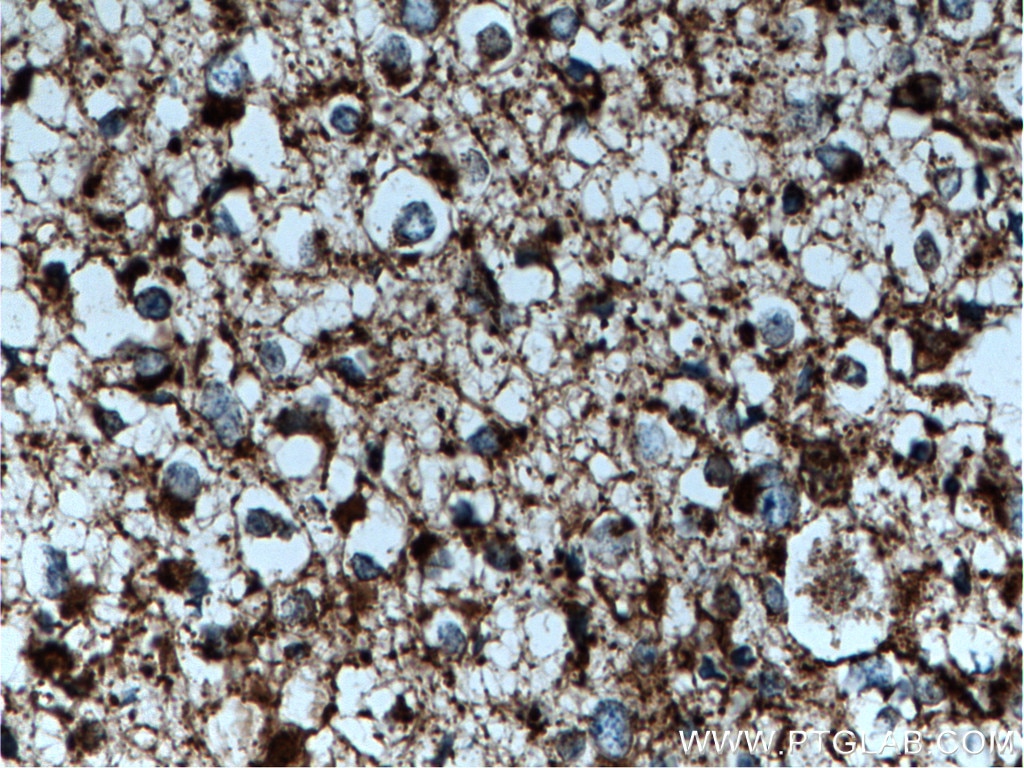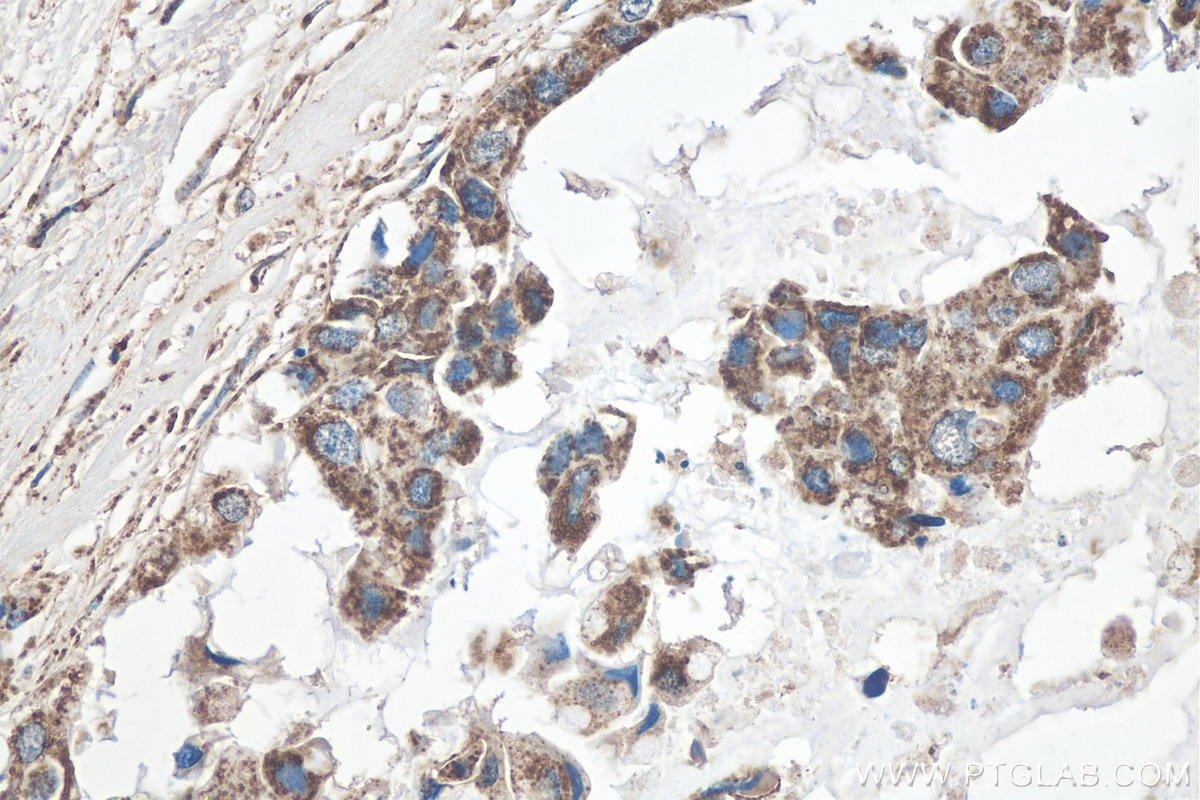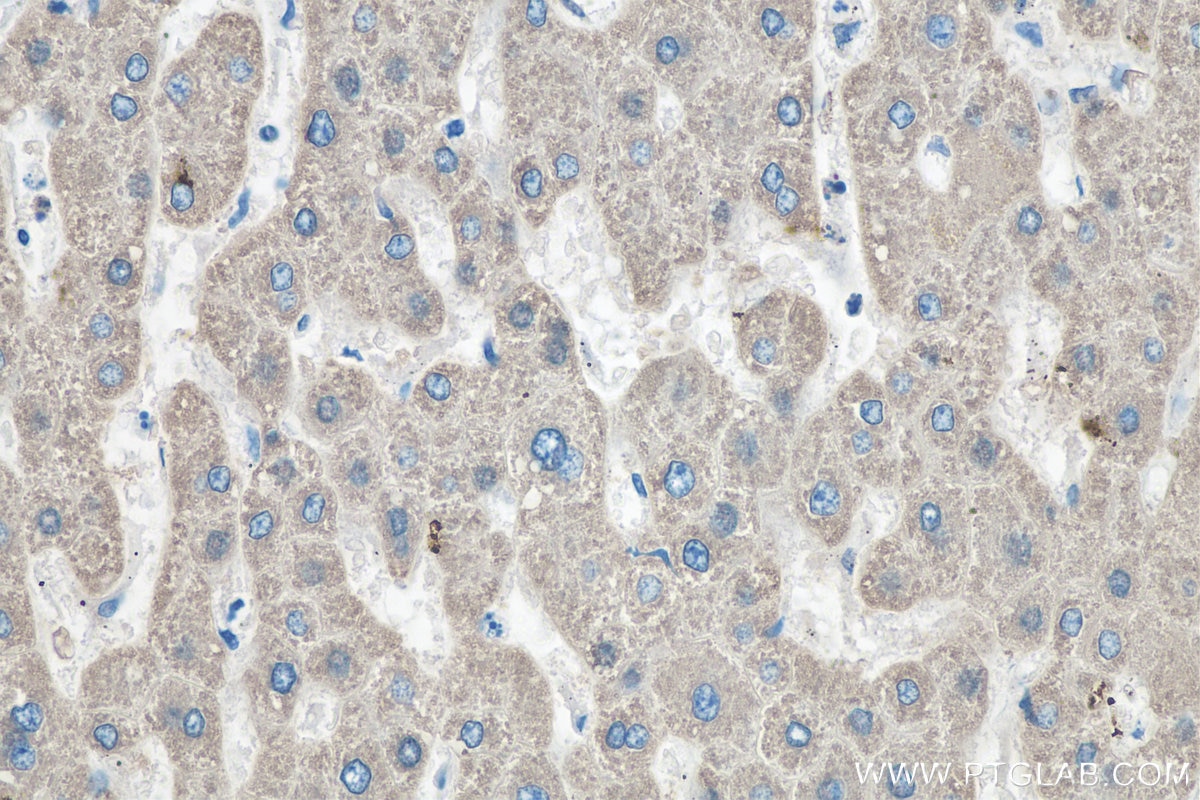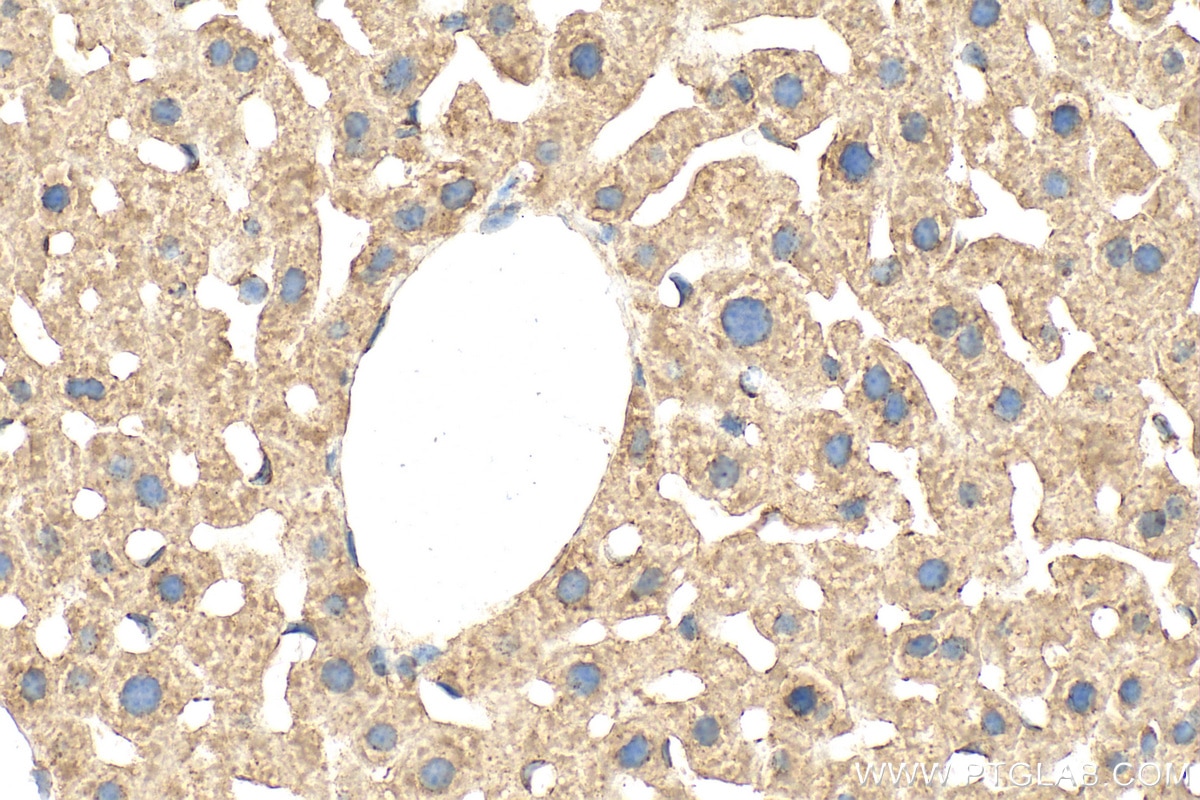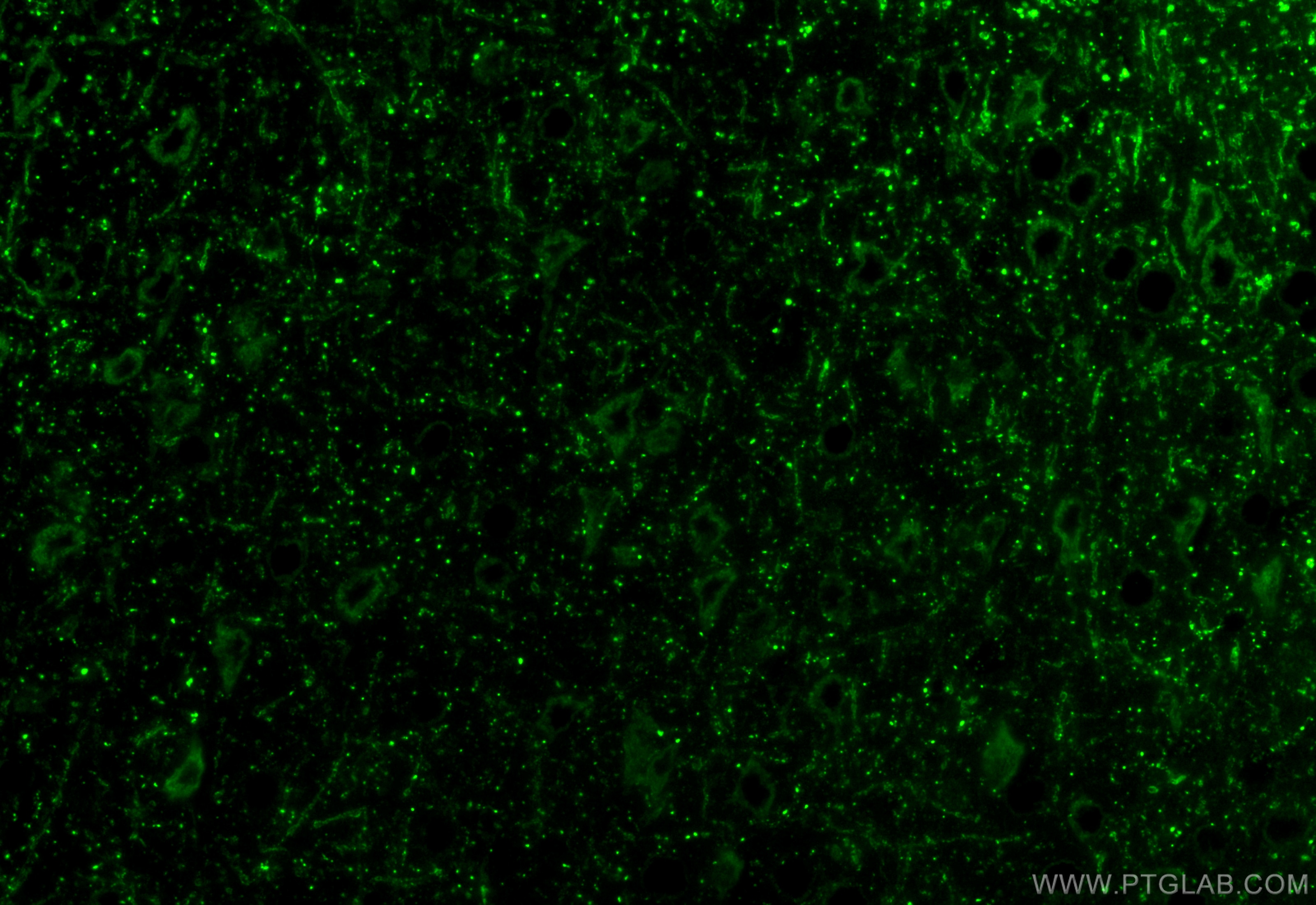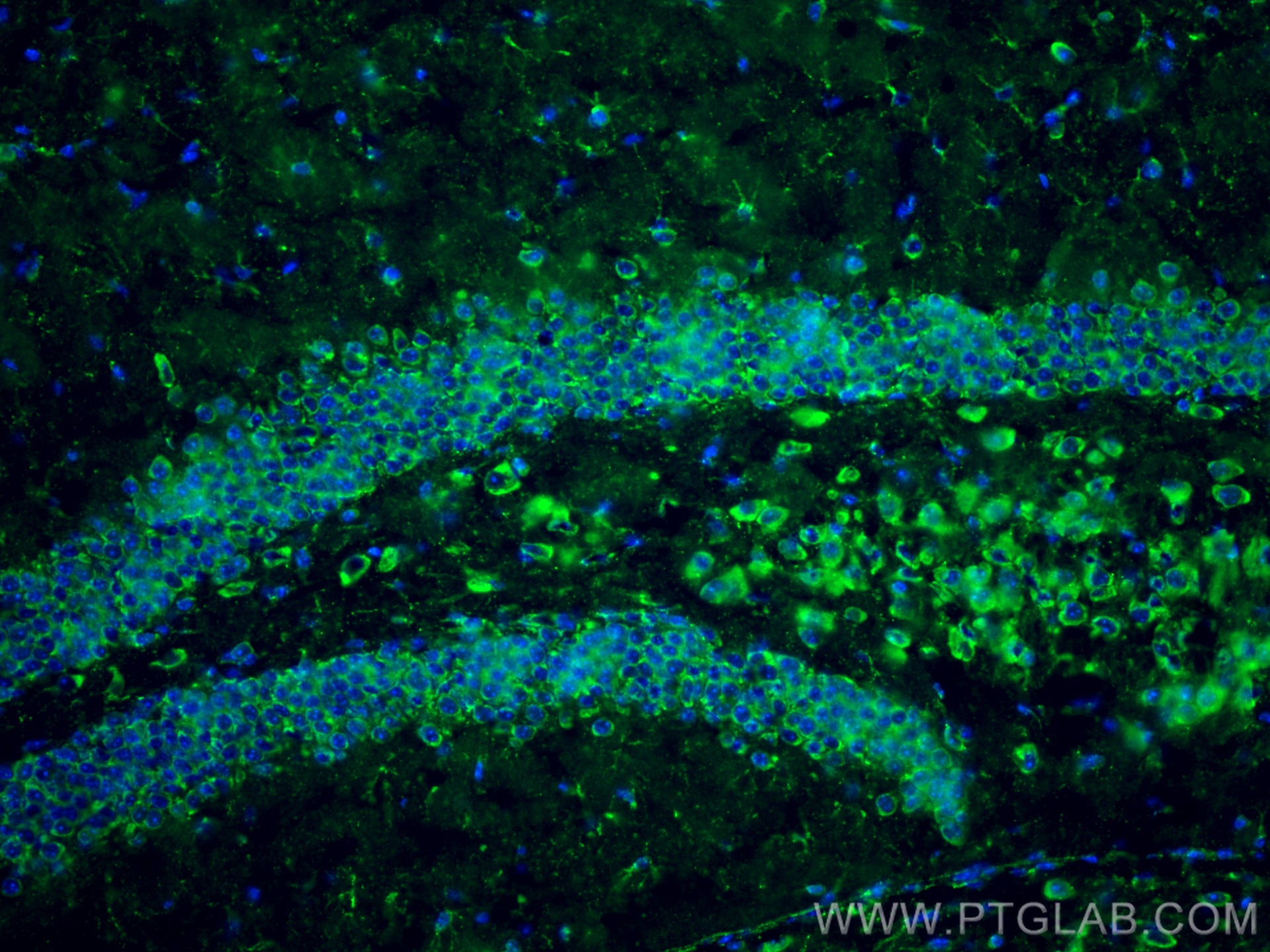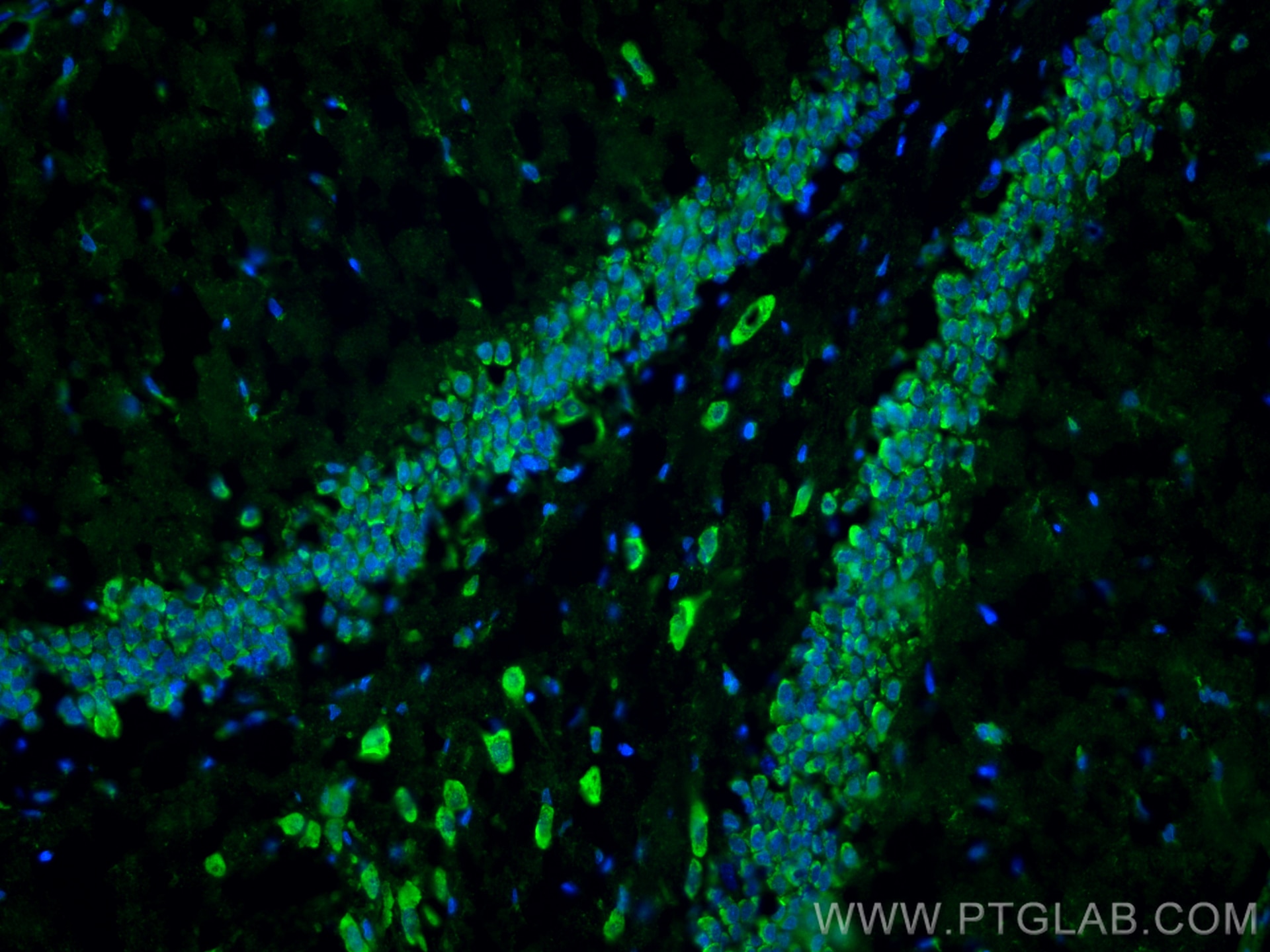- Phare
- Validé par KD/KO
Anticorps Polyclonal de lapin anti-GLUD1
GLUD1 Polyclonal Antibody for WB, IHC, IF-P, IF-Fro, IP, ELISA
Hôte / Isotype
Lapin / IgG
Réactivité testée
Humain, rat, souris et plus (1)
Applications
WB, IHC, IF-P, IF-Fro, IP, CoIP, ELISA
Conjugaison
Non conjugué
N° de cat : 14299-1-AP
Synonymes
Galerie de données de validation
Applications testées
| Résultats positifs en WB | cellules HeLa, cellules HepG2, cellules L02, cellules PC-3, tissu hépatique de rat, tissu hépatique de souris, tissu pulmonaire de souris |
| Résultats positifs en IP | cellules HeLa |
| Résultats positifs en IHC | tissu de gliome humain, tissu de cancer du sein humain, tissu hépatique de souris, tissu hépatique humain il est suggéré de démasquer l'antigène avec un tampon de TE buffer pH 9.0; (*) À défaut, 'le démasquage de l'antigène peut être 'effectué avec un tampon citrate pH 6,0. |
| Résultats positifs en IF-P | tissu cérébral de souris, |
| Résultats positifs en IF-Fro | tissu cérébral de souris, tissu cérébral de rat |
Dilution recommandée
| Application | Dilution |
|---|---|
| Western Blot (WB) | WB : 1:5000-1:50000 |
| Immunoprécipitation (IP) | IP : 0.5-4.0 ug for 1.0-3.0 mg of total protein lysate |
| Immunohistochimie (IHC) | IHC : 1:50-1:500 |
| Immunofluorescence (IF)-P | IF-P : 1:50-1:500 |
| Immunofluorescence (IF)-FRO | IF-FRO : 1:50-1:500 |
| It is recommended that this reagent should be titrated in each testing system to obtain optimal results. | |
| Sample-dependent, check data in validation data gallery | |
Applications publiées
| KD/KO | See 7 publications below |
| WB | See 50 publications below |
| IHC | See 4 publications below |
| IF | See 5 publications below |
| IP | See 2 publications below |
| CoIP | See 1 publications below |
Informations sur le produit
14299-1-AP cible GLUD1 dans les applications de WB, IHC, IF-P, IF-Fro, IP, CoIP, ELISA et montre une réactivité avec des échantillons Humain, rat, souris
| Réactivité | Humain, rat, souris |
| Réactivité citée | rat, Humain, porc, souris |
| Hôte / Isotype | Lapin / IgG |
| Clonalité | Polyclonal |
| Type | Anticorps |
| Immunogène | GLUD1 Protéine recombinante Ag5694 |
| Nom complet | glutamate dehydrogenase 1 |
| Masse moléculaire calculée | 61 kDa |
| Poids moléculaire observé | 45-55 kDa |
| Numéro d’acquisition GenBank | BC040132 |
| Symbole du gène | GLUD1 |
| Identification du gène (NCBI) | 2746 |
| Conjugaison | Non conjugué |
| Forme | Liquide |
| Méthode de purification | Purification par affinité contre l'antigène |
| Tampon de stockage | PBS with 0.02% sodium azide and 50% glycerol |
| Conditions de stockage | Stocker à -20°C. Stable pendant un an après l'expédition. L'aliquotage n'est pas nécessaire pour le stockage à -20oC Les 20ul contiennent 0,1% de BSA. |
Informations générales
Human glutamate dehydrogenase (GDH), an enzyme central to the metabolism of glutamate, is known to exist in housekeeping and nerve tissue-specific isoforms encoded by the GLUD1 and GLUD2 genes, respectively. It catalyses the reversible inter-conversion of glutamate to alpha-ketoglutarate and ammonia, thus interconnecting amino acid and carbohydrate metabolism. GLUD1 might contribute to the formation of specific synapses in the hippocampus such as those formed by the projecting neurons of the entorhinal cortex(PMID: 22138648). GLUD1 has a calculated molecular mass of 61 kDa and an apparent molecular mass of 45-55 kDa with the 53aa transit peptide removed.
Protocole
| Product Specific Protocols | |
|---|---|
| WB protocol for GLUD1 antibody 14299-1-AP | Download protocol |
| IHC protocol for GLUD1 antibody 14299-1-AP | Download protocol |
| IF protocol for GLUD1 antibody 14299-1-AP | Download protocol |
| IP protocol for GLUD1 antibody 14299-1-AP | Download protocol |
| Standard Protocols | |
|---|---|
| Click here to view our Standard Protocols |
Publications
| Species | Application | Title |
|---|---|---|
Science Metabolic recycling of ammonia via glutamate dehydrogenase supports breast cancer biomass. | ||
Cell Metab High dietary fructose promotes hepatocellular carcinoma progression by enhancing O-GlcNAcylation via microbiota-derived acetate | ||
Cell Metab Acetate enables metabolic fitness and cognitive performance during sleep disruption | ||
Cell Mitochondrial Sirtuin Network Reveals Dynamic SIRT3-Dependent Deacetylation in Response to Membrane Depolarization. | ||
Nat Metab Quantitative analysis of metabolic fluxes in brown fat and skeletal muscle during thermogenesis |
